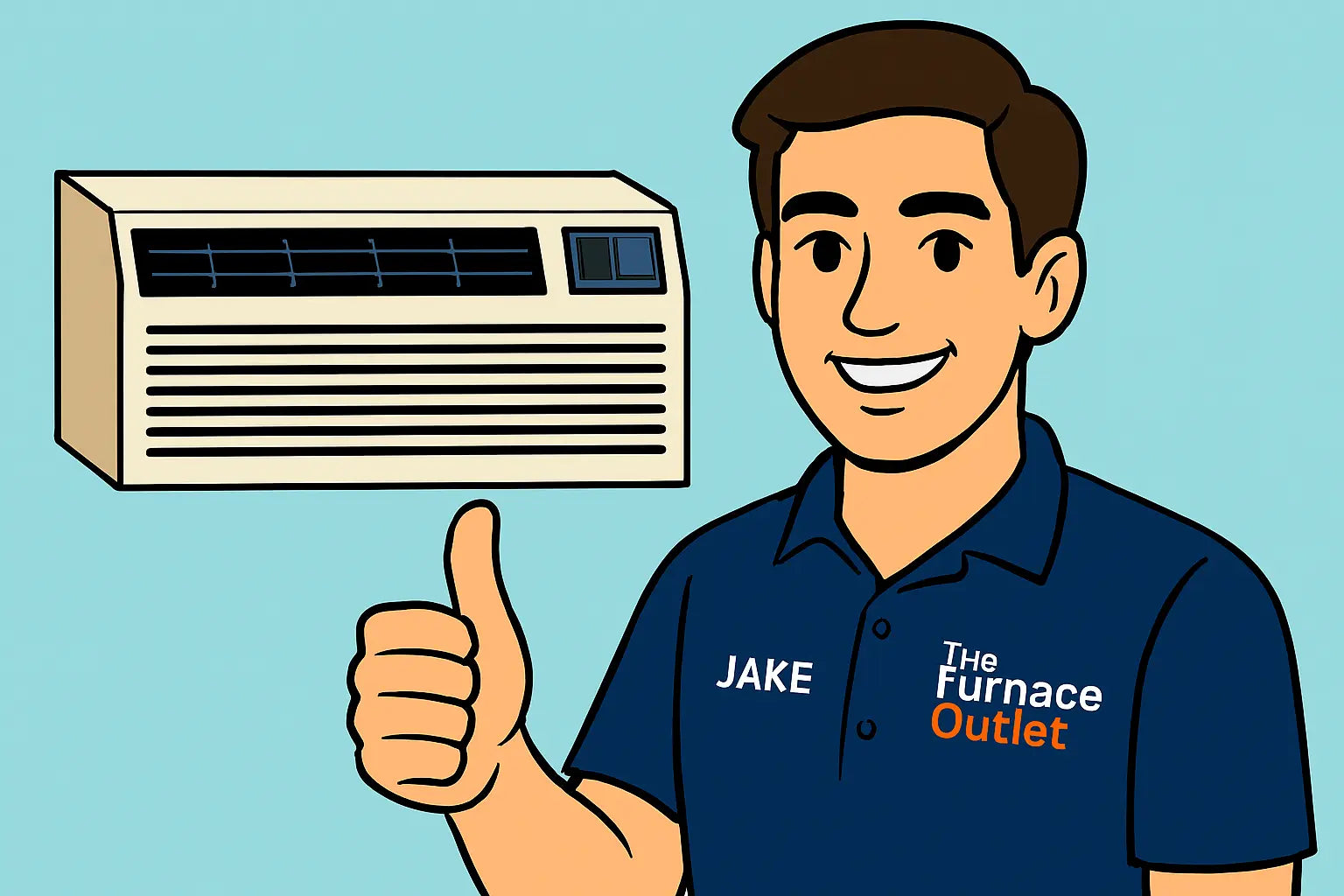Introduction: Jake’s PTAC Maintenance Mission
Hey, it’s Jake! You know that little workhorse in your wall—the Amana Distinctions 12,000 BTU PTAC unit—needs more than just occasional attention. Regular maintenance keeps it humming, saves money on energy bills, and prevents emergency repairs. Today, I’m walking you through my ultimate PTAC maintenance checklist, designed for peak performance and longevity. Let’s roll up our sleeves! 🔧🌬️
Step 1: Monthly Air Filter Check
Dirty air filters are the number one cause of PTAC inefficiency:
-
Remove the filter and vacuum or wash it.
-
Make sure it’s completely dry before reinstalling.
-
Replace it if it’s torn or extremely worn.
A clean filter improves airflow and prevents the unit from overworking. For reference, check the Amana Distinctions PTAC Manual for filter instructions.
Step 2: Condensate Drain & Pan Inspection
Water leaks can cause big headaches:
-
Inspect the condensate pan for cracks or buildup.
-
Ensure the drain line is clear and sloped downward.
-
Test by pouring a small amount of water into the pan to verify proper drainage.
HouseholdAir has a great guide on common PTAC problems and fixes including condensate issues.
Step 3: Coil Cleaning (Evaporator & Condenser)
Coils accumulate dust and reduce efficiency if neglected:
-
Use a soft brush or vacuum to remove surface dust.
-
For deep cleaning, a PTAC coil cleaner works wonders.
-
Avoid bending fins—use a fin comb if needed.
HD Supply offers practical tips on PTAC maintenance and coil care.
Step 4: Check Electrical Connections
Loose or faulty wiring can be dangerous:
-
Turn off power before inspection.
-
Look for frayed wires or loose screws.
-
Ensure all connections match the wiring diagram.
A quick check now prevents costly electrical repairs later.
Step 5: Inspect the Thermostat
A poorly calibrated thermostat can cause your PTAC to overwork or underperform:
-
Verify the temperature setting matches actual room temperature.
-
Replace batteries if it’s a battery-operated model.
-
Test heating and cooling modes to ensure smooth operation.
For troubleshooting thermostat issues, see Troubleshooting Guide for PTAC Units.
Step 6: Fan and Motor Check
Keep things running quietly and efficiently:
-
Inspect the fan blades for dust or debris.
-
Listen for unusual noises that may indicate motor wear.
-
Lubricate bearings if your model requires it (check the manual).
Proper fan maintenance improves airflow and extends motor life.
Step 7: Seasonal Checks
Twice a year—before summer and winter:
-
Inspect unit for leaks, rust, or loose hardware.
-
Check refrigerant levels if cooling performance drops.
-
Make sure air intake and exhaust vents are clear.
Pro tip: Keep a log of maintenance dates—it helps track wear and anticipate issues before they become serious.
Step 8: Call a Professional When Needed
Some maintenance requires expert hands:
-
Refrigerant recharging or leaks
-
Persistent electrical problems
-
Compressor or motor replacement
Conclusion: Jake’s Final Word on PTAC Care
Following this checklist keeps your Amana Distinctions PTAC unit running efficiently, saves energy, and prevents emergency repairs. Whether it’s cleaning filters, checking the drain pan, or giving those coils a good scrub, regular upkeep is the secret to year-round comfort.
And hey—if your old unit is on its last legs, don’t waste time wrestling with it. Upgrade to the reliable Amana Distinctions 12,000 BTU PTAC Unit with 3.5 kW Electric Heat and give yourself a fresh start.
Need more electrical safety tips? Visit: No-Nonsense Electrical Safety Tips for Installing Your Amana PTAC.
Stay proactive, stay safe, and keep that air flowing like a champ! 🌬️💪
- Jake, your comfort loving tech!







